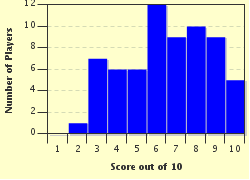Quiz Answer Key and Fun Facts
1. New Zealand is often classified as having two main islands and a "number of smaller islands". The third largest island is Stewart Island. Where is it located relative to the two main islands?
2. There are not many people in New Zealand, with only a handful of cities, with only four that have populations above 200 000 people. Which is the only one of the four located on the South Island?
3. New Zealand, an island country with many inlets and bays, is in the top ten of countries in the world with the largest coastlines.
4. The Treaty of Waitangi, signed in 1840, was an important document in the identity of New Zealand's cultural history. Where is Waitangi situated?
5. If you visit the charming city of Napier on the east coast of the North Island, many of the buildings in the inner city area appear to be Art Deco in style. What influenced this disproportionate representation of this style of architecture?
6. One of New Zealand major cities has a proud Scottish heritage. In fact it is named after Edinburgh itself. What is the name of this southern city?
7. Almost expectedly, the waters around New Zealand are named after explorers: Tasman Sea; Cook Strait, you get the picture. So it follows that the Foveaux Strait which separates Stewart Island from the "mainland" is also named after an explorer.
8. One key physical difference between Australia and New Zealand is that New Zealand is as mountainous as Australia is flat. What European sounding name is the steep mountain range that bisects the South Island?
9. It was become an overused joke that New Zealand has more sheep than people but is New Zealand one the world's top five countries by number of heads of sheep?
10. New Zealand is situated more south than the Great Southern Land of Australia. However it is a long narrow country. Cape Reinga is (incorrectly) thought to be the northern tip of New Zealand. It is approximately the same latitude as which big Australian city?
Source: Author
1nn1
This quiz was reviewed by FunTrivia editor
agony before going online.
Any errors found in FunTrivia content are routinely corrected through our feedback system.

